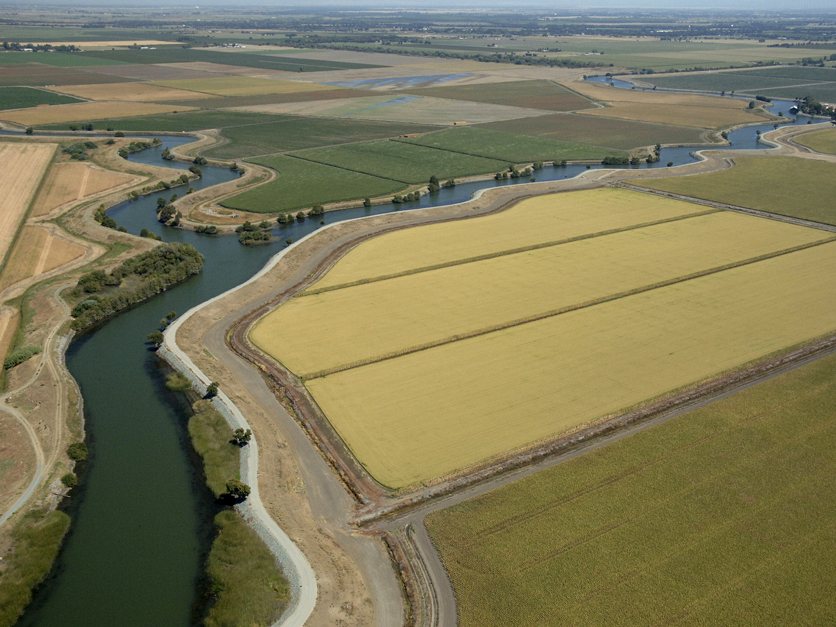The State Water Resources Control Board is gearing up for a series of major decisions likely to impact agriculture for decades to come. Environmental justice activists (EJs) are pressing the water quality regulator to dedicate more freshwater flows to fish populations and to boost EJ voices within the groundwater sustainability plans (GSPs) that have failed to meet state standards.
“It's go time for us at the water board,” said Dorene D’Adamo, the board’s vice chair and agricultural representative, at the California Farm Bureau’s recent Capitol Ag Conference, as she discussed river flows as well as the Sustainable Groundwater Management Act (SGMA).
The board held its first hearing last week on six GSPs that the Department of Water Resources deemed inadequate and sent up the chain for the water board to review as the regulatory backstop for SGMA. The board will soon establish a timeline to decide on the lengthy documents, a process that could stretch up to three years. But EJs urged the board to review all six plans at once and to add strict rules for demand management—setting caps on the amount of water farmers could pump from the aquifers.
“GSAs [groundwater sustainability agencies] have had years to fix a lot of the issues,” argued Nataly Escobedo Garcia, a policy coordinator at the Leadership Counsel for Justice & Accountability. “It is critical that the board move quickly towards probation.”
Board staff, however, explained that it would not be feasible to hold the hearings for all six basins at once. Even a rushed evaluation of each plan would take at least six months. If the board does decide to put a GSA on probation after that, staff would embark on a process of collecting extensive data on groundwater extraction rates before taking action. Adding new meters to monitor the pumping would require new fees on water users, though staff assured they would be lower than the current GSA fees. The GSAs would have one year before any state-imposed plan for the basin would kick in.
 Water board vice chair Dorene D'Adamo
Water board vice chair Dorene D'AdamoMatt Zidar, a water resources manager at San Joaquin County Public Works, encouraged the board to avoid the regulatory “hammer” with meters and to keep costs down for water users. He advised sticking with a system for monitoring evapotranspiration through satellite images and to consider regional economic impacts for any state-imposed pumping cutbacks.
Board chair Joaquin Esquivel promised Zidar the board has many other tools it would deploy before requiring metering. Esquivel also led his colleagues in choosing to postpone any decision on a timeline for reviewing the GSPs until the governor submits his revised budget proposal in May and the board has a better understanding of its own budget for funding the additional staff workload.
Justin Fredrickson, the farm bureau’s environmental policy analyst, commended Esquivel’s promise that the board’s involvement will be temporary and it will proceed as if the basins will return to local control. Like Zidar, Fredrickson worried that fees and other costs could hamper a GSA’s ability to invest in new sustainability projects like groundwater recharge.
Others urged the board to ease surface water restrictions to allow for more recharge to balance the aquifers. The board has been ramping up its regulatory activity on that front as well.
D’Adamo and Esquivel recently hosted a five-hour listening session focused on environmental justice in the Bay-Delta Water Quality Control Plan. D’Adamo pointed out to farm bureau members later that “a lot of environmental organizations are not happy” with the board’s approach and would rather see it guarantee unimpaired flows for fish.
During the workshop, dozens of advocates pleaded with the board to immediately implement a controversial 2018 update to its Bay-Delta Plan, committing 40-60% of the water from major rivers to fisheries. They called for the board to reject a set of voluntary agreements championed by the Newsom administration that would add a more flexible flow dynamic while investing in habitat restoration projects in the Sacramento–San Joaquin Delta.
According to D’Adamo, Sacramento Valley water districts have presented the board with a package of flow and nonflow proposals under the agreements. Staff are assembling that into an environmental document for the board to review later this year.
While the EJ opposition has remained consistent for several years, the number of advocates testifying at each hearing has also far outweighed that of any other stakeholder group. EJs have often teamed up with tribes as well. Such a coalition filed a civil rights claim with the EPA against the water board last month. The complaint requests the agency investigate discriminatory practices at the board that allegedly harm communities in river watersheds and the Delta by allowing fish populations to decline and toxic algal blooms to flourish.
“Time's up. These foolish and racist policies favoring billionaires and disenfranchising all other Californians is of a different time in history,” said Diane Livia, an advocate for San Francisco Baykeeper, during the workshop last month.
Just one commenter defended agriculture from the many environmental justice concerns raised by the groups. Annissa Fragoso, a farm insurance agent and board president of the Merced County Hispanic Chamber of Commerce, charged that implementing the Bay-Delta Plan update alone would harm people of color and disadvantaged communities.
“The state is putting our very way of life in jeopardy,” said Fragoso. “The water we have used for more than 100 years fuels half of Merced County’s $3.4 billion agriculture industry and [the plan] will result in widespread consequences to our already stressed economy.”
She added that the surface water is used for recharging groundwater to maintain a drinking water supply for communities. The 2018 plan update, she argued, would escalate unemployment among ethnic minorities, increase crime and mental health challenges, and harm their drinking water.
The board could cast a decisive vote this year on a separate water supply issue as well.
It is one of the permitting agencies for the Sites Reservoir Project, an off-stream reservoir proposal that is under review at the Water Commission. The reservoir would pull excess flows from the Sacramento River, which is a critical source of freshwater and habitat for endangered salmon and other species. Environmental groups have staunchly opposed the project, along with a proposed expansion of Shasta Dam to store more water near the source of the river.
The board is also at a pivotal point in deciding how much water farmers can divert from rivers. Progressive Democrats are standing alongside EJ groups in proposing policies for overhauling the state’s administration of water rights. The board has yet to weigh in on how its new environmental justice policies could guide its approach to such reforms.
At the farm bureau conference—before members boarded buses to meet with lawmakers—D’Adamo urged them to “make it clear that you are supportive of following the existing water rights system that we have.”
Don’t miss a beat! It’s easy to sign up for a FREE month of Agri-Pulse news! For the latest on what’s happening in Washington, D.C. and around the country in agriculture, just click here.
“It's important that we follow water rights and it's important that we can show successful implementation of the existing system,” she said.
D’Adamo advised diverters to comply with curtailment orders and to file their annual compliance reports, noting that a group of ranchers in Siskiyou County gained widespread media attention for defying those orders last year.
“That's probably one of the least advisable things to do,” she said. “Because that is really opening up this whole discussion about whether or not our water rights system even works.”
The annual reports on diversions provide the board with key data that informs the curtailments. Like a bank, she explained, the agency must know what is coming in and what is going out to determine if the system is in balance.
“If we don't have the correct information that we need, then we are truly in a situation in California where we say we have a water rights system that is not working,” she said. “We want to show that it works.”
Earlier in the conference, California Farm Bureau President Jamie Johansson raised alarms about the many new bills in the Legislature aimed at reforming the system.
“They're coming full force for water rights,” he said, adding that the administration has also signaled it may be open to some of those changes. “The governor's water policy books are talking about rethinking historic water rights or using the words ‘archaic water rights’—code for they want to do away with how we appropriate water in this state.”
For more news, go to Agri-Pulse.com.


